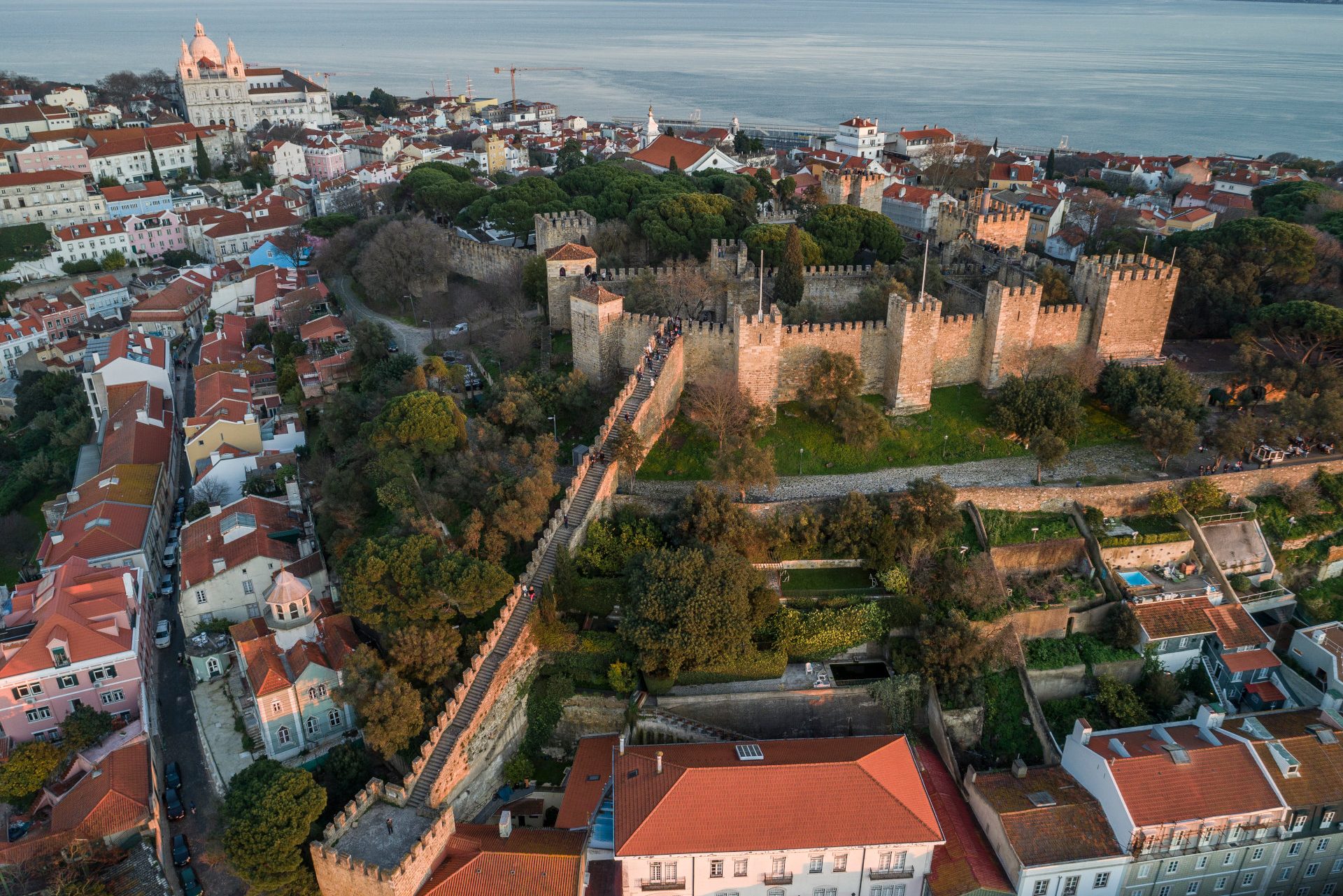Buildings which have disappeared

Eduardo. 1900-1958
Between the late-16th century and the first decades of the 20th century, the Castelo de S. Jorge was occupied by a garrison. Organized into several units, each with tens or hundreds of soldiers, the existing buildings had to be adapted or new ones built to house all the soldiers. Therefore, from a certain point onwards, Castelo of S. Jorge ceased to be where the king, the alcaide (governor), nobles, military officers and other officials lived and became known as the garrison at the castle.
The garrison was, in fact, a set of buildings built across different periods, rather than a single building built all at once. This collection of buildings, one on top of the other and built partly over the castle, were demolished in the 20th century, between 1938 and 1940, when extensive restoration work took place to free the castle from the buildings which hid it.
The garrison had different types of buildings. The barracks, where the soldiers slept and ate, which were located in huts next inside the fortress, next to the castle walls. The parade grounds, which were the outdoor spaces where soldiers could do physical exercise or be inspected. Storehouses for materials, such as shotguns, and the powder magazine. The inn for soldiers passing through. Then there was the prison for enemy soldiers, deserters (soldiers who had run away because they didn’t like wars) and those who had committed any other crime.
At Castelo de S. Jorge, there was a soldiers’ hospital that was created at the end of the 16th century by King Philip I. As it was created at the time when Portugal was ruled by the kings of Spain, it was known, for a long time, as the Castilian Hospital. From then, until the 19th century, there was always a soldiers’ hospital at the castle.
The hospital was managed during the 17th and 18th centuries by a religious order, whose mission was to help the sick, especially sick soldiers, called the Hospitaller Order of St. John of God. The Brothers Hospitallers of Saint John of God were the largest religious organisation dedicated to helping and treating military personnel.
We know where the soldiers’ hospital was located because archaeologists have found the ruins of the hospital and many objects that were preserved in the rubble of the 1755 earthquake. Some of these objects, such as basins, lamps or plates, are on display in the Museum Centre. Many are deformed as a result of the heat of the fires which raged following the earthquake
After the great earthquake of 1755, several economic and social problems arose in the city of Lisbon. To resolve some of these issues, the Intendant General of the Police, Diogo Inácio de Pina Manique, founded Real Casa Pia de Lisboa in 1780, a charitable institution that was housed in Castelo de São Jorge. Casa Pia not only cared for orphans and abandoned children, but also beggars and vagrants, giving them shelter and ensuring their education. Casa Pia operated in the castle until 1807, when French troops who were invading Portugal under Junot’s command settled there.
